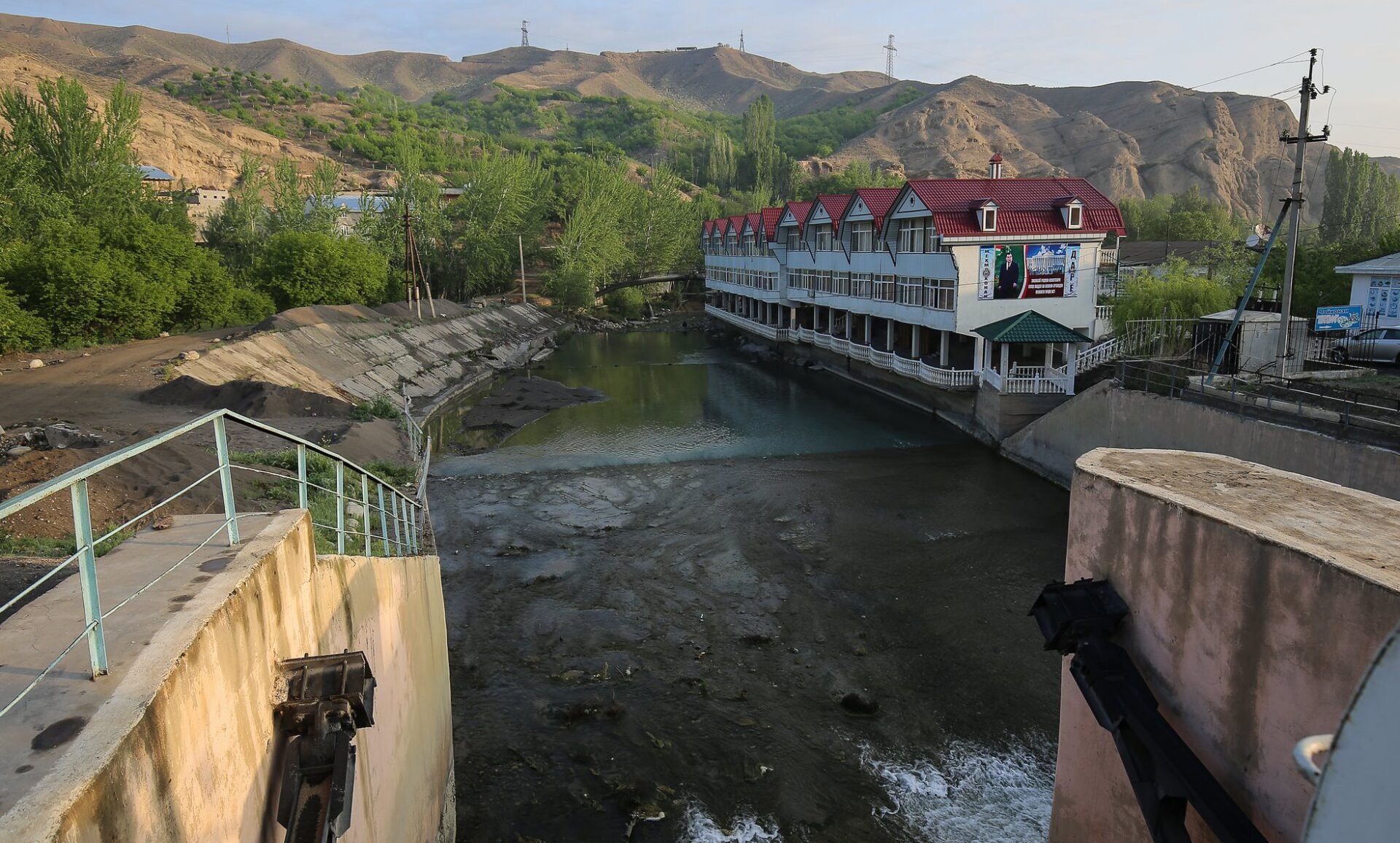(PONARS Eurasia Policy Memo) In late April 2021, cross-border violence resulted in the deaths of 36 Kyrgyz and 19 Tajik citizens. The springtime violence represents the deadliest interstate conflict in Central Asia since 1991. This fighting, however, was predictable. Recent years have seen clashes along the Kyrgyz-Tajik border become increasingly militarized. Kyrgyz and Tajik Troops exchanging bullets across the border is a new norm, one that suggests their professed “eternal friendship” is literally under fire. How can we account for the April 2021 violence and the growing intensity of conflict along the Kyrgyz-Tajik border?
We acknowledge that Central Asia borders are, in many places, an uncomfortable fit for the many communities that today live astride these Soviet-era imaginings. Colonial-era borders, though, are constants; they are enduring background conditions that, alone, are insufficient to explain periodic flashes of cross-border violence. We argue that it is the interplay of (1) scarce yet valuable resources like water, (2) profits that come from illicit cross-border trade, and (3) the frequent political expediency of interstate conflicts that is motivating deadly tensions along Central Asia’s borders.
The (Un)expected Events of April 2021
The violence in April last year began with clashes over the Golovnoi water intake facility. The Soviet-built infrastructure regulates water flow from the river Ak Suu (Kyrgyz)/Isfara (Tajik) to downstream Tajik and Kyrgyz communities. The tensions grew after local Tajik authorities installed cameras on electric poles at the Golovnoi facility, but residents of both sides have sought control over the facility. On April 29, border troops exchanged fire as local villagers gathered for a protest. As is increasingly usual, the two sides accused one another of shooting first. On the same day, several border villages in Kyrgyzstan in the neighboring Leilek district came under fire from (and the brief control of) Tajikistan’s troops. Following three days of violence and two telephone calls between Presidents Sooronbay Jeenbekov and Emomali Rakhmon, a ceasefire was reached, and troops were withdrawn. However, there were fifty-five fatalities, tens of thousands of civilians fled their homes and have yet to return, and homes, schools, and gas stations were systematically torched.
Table 1. Number of Reported Incidents on the Kyrgyz-Tajik Border
| 2010 | 2011 | 2012 | 2013 | 2014 | 2015 | 2016 | 2017 | 2018 | 2019* | 2020 |
| 24 | 18 | 18 | 19 | 32 | 10 | 11 | 10 | 8 | 13 | 9 |
Although the intensity of the April conflict took many off guard, reports of tension along the Kyrgyz-Tajik border are now routine news. While Table 1 above documents a decrease in border conflict since 2015, it does not show the qualitative uptick in the violence of these conflicts. Prior to 2014, border incidents involved local residents arguing and, in rare cases, throwing stones. It was not until January 2014 that a conflict over contested road construction saw the use of heavy ammunition, mortar shells, and rocket-propelled grenades for the first time. In September 2019, four border guards were reported killed in cross-border exchange of fire. These deaths occurred just two months after Jeenbekov and Rakhmon made much-feted declarations of peace in July 2019. A May 2020 exchange of gunfire left several border guards injured. The April 2021 violence, in short, is in keeping with a pattern of escalating violence, consistent with analyst Gulnar Rakhmatullina’s 2009 forecast that “the use of weapons and the army [was] only a matter of time” in the Kyrgyz-Tajik border.
A persistent factor permissive of border conflicts is a dispute over where the border separating Kyrgyzstan and Tajikistan lies. The boundaries of Kyrgyz and Tajik Soviet republics were drawn in the early decades of the Soviet Union, with limited input from Kyrgyz and Tajiks. During the Soviet period, the fuzziness of these then internal borders rarely resulted in bloodshed. The Communist Party centrally planned and centrally controlled the infrastructure projects that crisscrossed Eurasia and resolved disputes that arose between constituent republics. After 1991, however, Bishkek and Dushanbe have offered competing Soviet-era maps when disputing their shared 600 mile-long border. Today, about 300 miles of this border has yet to be mutually recognized by both states.
There are different ways in which unclear borders fuel conflicts. First, for newly independent states, the national border turned into a symbol of sovereignty. The border, therefore, is securitized, and any border-related conflict becomes a matter of strategic importance. Second, unclear borders create ample chance for residents and cattle to unknowingly “violate” the border, and thus create a new incident. Third, efforts at border delimitation disrupted existing practices and norms, thus adding to insecurity rather than security. Critically, disagreements over unclear borders are necessary but not sufficient causes for understanding the increasing militarization of the conflict. A more comprehensive understanding of conflict drivers requires examining three related factors: shared resource management, illicit trade, and domestic Kyrgyz and Tajik politics.
Common-Pool Resources
Common-pool resources (CPRs), even when they reside fully within a single state, are difficult to regulate. Political scientist Elinor Ostrom documented the challenges communities face in equitably sharing CPRs when there is an absence of shared norms, clear understandings of the benefits of regulation, and the ready ability to monitor the use and potential abuse of resources. The CPR at the center of the April 2021 conflict—water–straddles two populations that, regrettably, lack shared norms with regards to water usage, lack a common vision about the benefits of regulation, and most problematically, lack a single entity that can monitor the use and abuse of water consumption.
The April 2021 violence was not the first time when a water-related dispute produced violence. Kyrgyz road construction near the sluice sparked an exchange of gunfire between Tajik and Kyrgyz border guards in 2014. Following the 2014 skirmish, the two sides, along with international partners, attempted to build a shared Kyrgyz-Tajik water monitoring regime. This inchoate regime has yet to take hold, and control of the Soviet-built Golovnoi facility, as well as the apportionment of water flowing from this facility, remains hotly contested.
The Tajik government has accused Kyrgyzstan of unilaterally seeking to take possession of the critical water infrastructure. The Kyrgyz government, in turn, blames Tajikistan for sparking the April 2021 violence by installing surveillance cameras on electric poles within Kyrgyz territory to monitor the Golovnoi facility. Unless the cross-border communities dependent on the Ak Suu/Isfara river can develop shared norms, a common vision, and a shared monitoring mechanism, the Golovnoi facility and disputes over water broadly will continue to spark conflict in the region.
Importantly, the border communities had better days in terms of norms and visions on shared use of water. Even in the absence of formal regulatory institutions, residents of the arid regions of Central Asia have long had local rules for the fair use of water. Evidence of that are references to murabs, who are special individuals responsible for orderly water usage by community members. While these would not eliminate conflicts, they would be able to resolve ad hoc disputes. The emergence of national borders in the area complicated the situation. However, it was the securitization and militarization of the border that eroded trust between communities, turning canal cleaning from a practice of shared use of resources to part of an increasingly competitive and zero-sum exercise. The conflicts, such as the one last April, will only deepen the deficit of trust and add to the challenges of shared resource usage in the future.
Rent-Seeking and Illicit Trade
Tajikistan, in contrast to Kyrgyzstan, has yet to join the Eurasian Economic Union, a common market that includes Armenia, Belarus, and, most critically, oil-rich Russia and Kazakhstan. Tajikistan’s position outside the Union has hardened what was already a long-standing disparity in the pricing of one critical commodity, fuel. Tajik drivers pay on average 40 percent more for gasoline than their Kyrgyz counterparts do. This disparity in gas prices has given rise to an extensive contraband economy. Contraband Kyrgyz fuel is thought to make up 30 percent of Tajikistan’s total gas supply.
Fuel is not the only commodity that is enriching Tajik and Kyrgyz criminal networks—illicit drugs from Afghanistan transit Tajikistan and Kyrgyzstan en route to Russia and European markets. Narcotics trade flows are even more opaque than cross-border fuel smuggling. That said, we know that the narcotics trade can inflame conflict at the border. In 2012, for example, militants loyal to a local Tajik warlord, Tolib Ayombekov, clashed with state border guards. The clash had its origins in Ayombekov and the Tajik state’s competing efforts to capture the rents that come from controlling the narcotics trade that passes through the Ishkashim border post with Afghanistan.
There is little evidence to suggest that contraband, either fuel or narcotics, was a direct contributor to the Golovnoi violence. Importantly though, given that the Tajik-Kyrgyz border is awash with rents that stem from the control of illicit trade, the Tajik and Kyrgyz leaders have strong incentives to undermine rather than professionalize state institutions like the border guards. It is not the strength but rather the “weakness of government agencies” that paradoxically empowers autocrats to benefit from illicit trade, as professor William Reno wrote. Problematically, as Reno notes of cases of illicit cross-border in Africa, weakening state agencies so as to facilitate corruption concomitantly produces environments where armed conflicts are frequent.
Political Expediency of Nationalism
As the diversionary war approach suggests, embattled leaders can see an external conflict as an opportunity to create a “rally around the flag” and divert public attention from problems at home. Central Asian ruling regimes are inherently insecure, as they suppress genuine political competition and boast high levels of corruption. Strong authoritarian leaders, such as Rakhmon, need to maintain an image as the “father of the nation,” while “revolutionary” leaders, such as Sadyr Japarov (who replaced Jeenbekov in October 2020), rely on populist-nationalist rhetoric to conceal the lack of other revolutionary characteristics.
Borders and border conflict—real and manufactured—are ideal backdrops for nationalist politicians. In 2015 candidate Donald Trump launched his successful presidential campaign with the imagery of Mexico sending drug runners and rapists across the border. Nationalist leaders in Kyrgyzstan and Tajikistan, like their American counterpart, have similarly found that accentuating presidential responses to border conflicts is politically expedient. Thus, Kyrgyz leaders afforded themselves a good deal of political populism, claiming relocating tens of thousands of Tajik citizens in the Vorukh enclave could be one solution to border disputes. Such statements from Bishkek came as a “gift” to the Tajik president, who acted in style, visited Vorukh, and rejected any idea of territory swap with Kyrgyzstan.
Fortunately, for now, both presidents appear to prefer bluster to bullets. Rahkmon and Japarov, while they did little to silence nationalist rhetoric in their countries’ respective media outlets, assured one another by phone that they would each pull troops back from the area of conflict and that state delegations would continue to meet to discuss border delimitation. Achieving concrete advances on this delimitation will be difficult given the nationalist stances both leaders have taken. And the continued indeterminacy of the border, moreover, works to both leaders’ advantage. Periodic yet short-lived border unrest, be it migrants amassing along the U.S. southern border or sporadic violence between Tajik and Kyrgyz villagers, provides nationalist presidents regional and, indeed, world stages on which they can play out the role of state defender.
Conclusion
Parsimony, not complexity, is what analysts and social scientists typically seek in their analysis. The origins of violent conflict rarely, though, are monocausal. The April 28-29 deadly violence along the Kyrgyz-Tajik border shares much in common with other deadly conflicts that have occurred along Central Asia state frontiers. These conflicts cannot be distilled into disputes over resources. Nor can they be explained away by invoking the region’s murky borders, the cartological legacy of a collapsed empire. That one country is a member of an economic union, and the other is not, yes, may imbue these murky borders with new meaning and new rent-seeking opportunities. And yes, both Rahkmon and Japarov’s nationalist rhetoric engenders an environment that is permissive of cross-border violence.
Ultimately the proximate driver, the proverbial spark that ignites any one bout of deadly violence, is idiosyncratic and varies from case to case. Strategies designed to mitigate cross-border conflict will not succeed if they chase these proximate sparks at the expense of deeper, though not always immediately, causal variables of violence. Challenges of resource management, indeterminate state boundaries, illicit trade, and increasingly nationalist discourse are shared preconditions that make Tajik-Kyrgyz cross-border violence more likely. Addressing these preconditions, as well as the complex interactions among these preconditions, holds the potential to limit the sparks of cross-border conflict from turning into conflagrations of cross-border violence.
Shairbek Juraev is Co-founder and President of Crossroads Central Asia, and Asociate Research Fellow at the OSCE Academy in Bishkek.
Eric McGlinchey is Associate Professor in the Schar School of Policy and Government at George Mason University.
PONARS Eurasia Policy Memo No. 733











